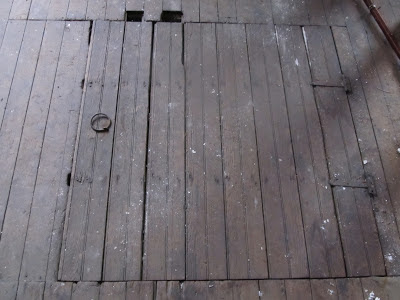The same day that I was at the library, with Cheryl Poch giving me the 1992 advertisement poster (see previous ~15 posts), she also showed me a couple of contributions from Don Knodle, a Fowlerville schools retired teacher. I believe both pictures will be freshly framed and hung somewhere in the library at a later date. For now, though, I figured I would place these on the website.
Mr. Knodle contributed a Ford baseball team picture showing Charles Gehringer with his teammates.
On the back of the photograph, someone had fortunately written the line-up of names and the players' positions.
For anyone researching family histories, I am going to list the names to help in searching this site. They are:
~~Ora Atkins, 3rd base,
~~Howard Canfield, left field,
~~Duris, first base,
~~Floyd Barley, center,
~~Cocky VanBuren, shortstop,
~~Clay Nichols, score keeper,
~~Jeffrey, right field,
~~Charles Gehringer, pitcher,
~~Glen Sopp, second base and captain, and
~~George Hart, catcher.
Along with the above information, Mr. Knodle provided the following:
Tomorrow's post will be of a photograph of a 1910 tractor Mr. Knodle offered.
As a bit of a sidelight, I would like to explain how all of this information ends up on the website. I use my trusty digital camera. When someone contacts me or I come across a piece of Fowlerville history, I take lots of pictures. Never do I want to have these treasures in my position (unless of course they are donated to the historical collection, which then they go directly to the village hall for safe keeping). If you or someone you know have items that could be of historical significance, please feel free to contact me through the website or by leaving a comment, and let's get these items preserved for others to enjoy -- either through digital pictures or as part of the collection.
In less than 25 years, Fowlerville will be celebrating the 200th anniversary of the arrival of Ralph Fowler and wouldn't it be great to have more memoriabilia than one committee knows what to do with it!


















































